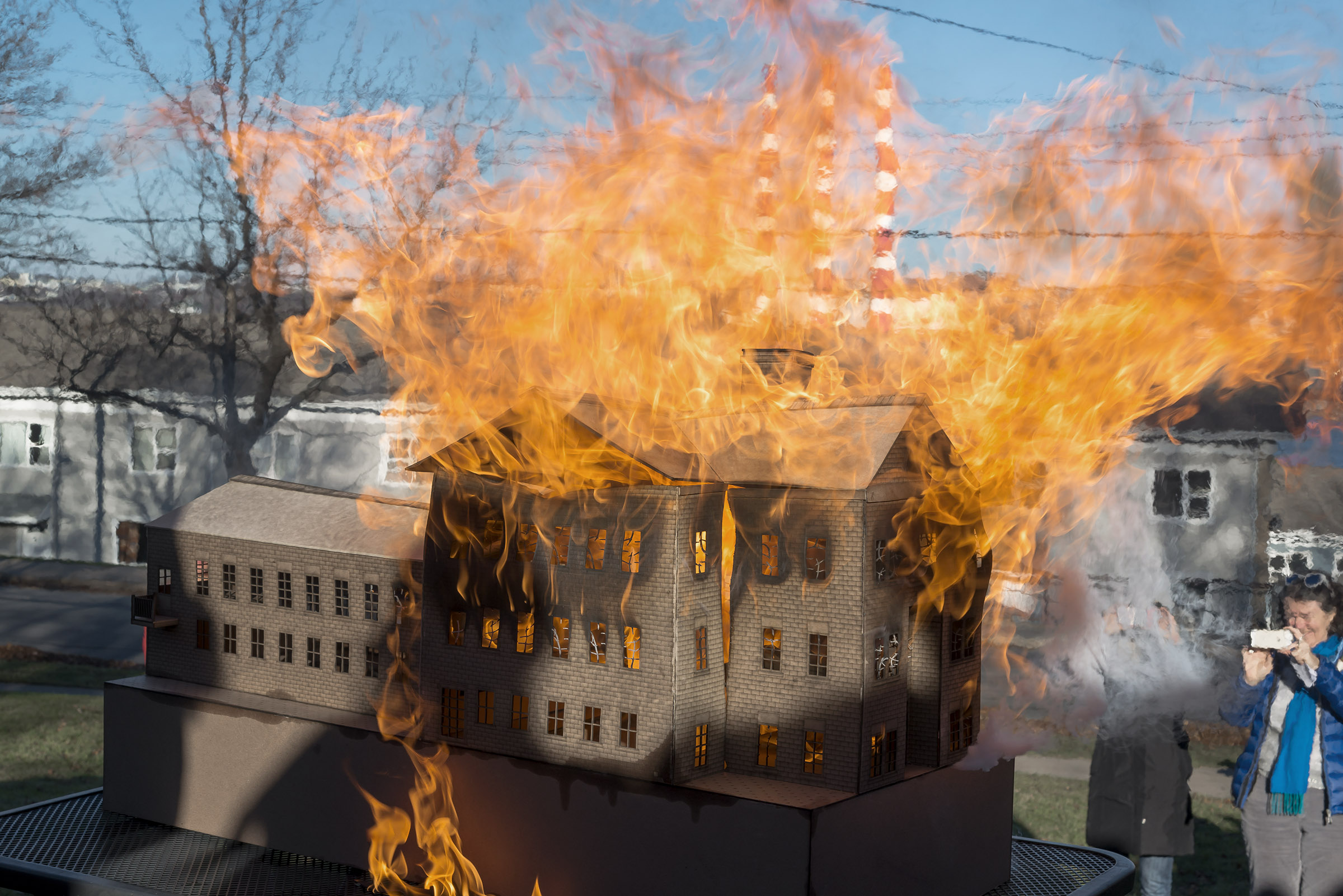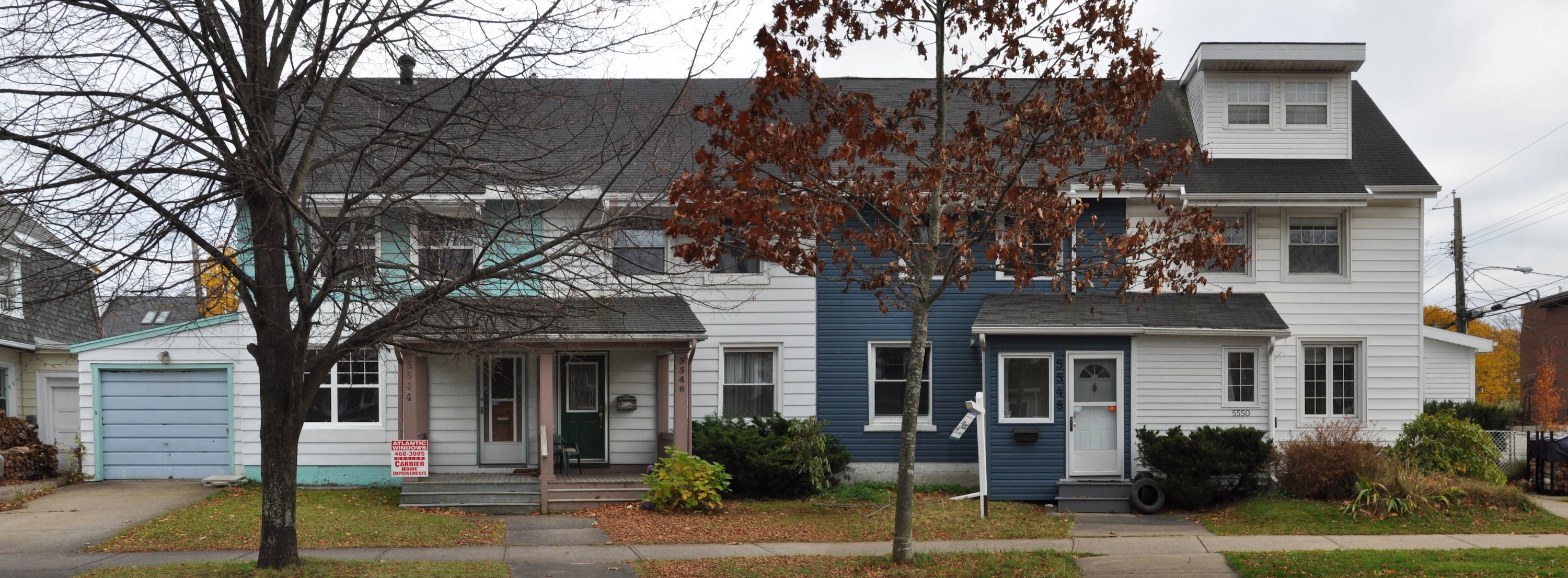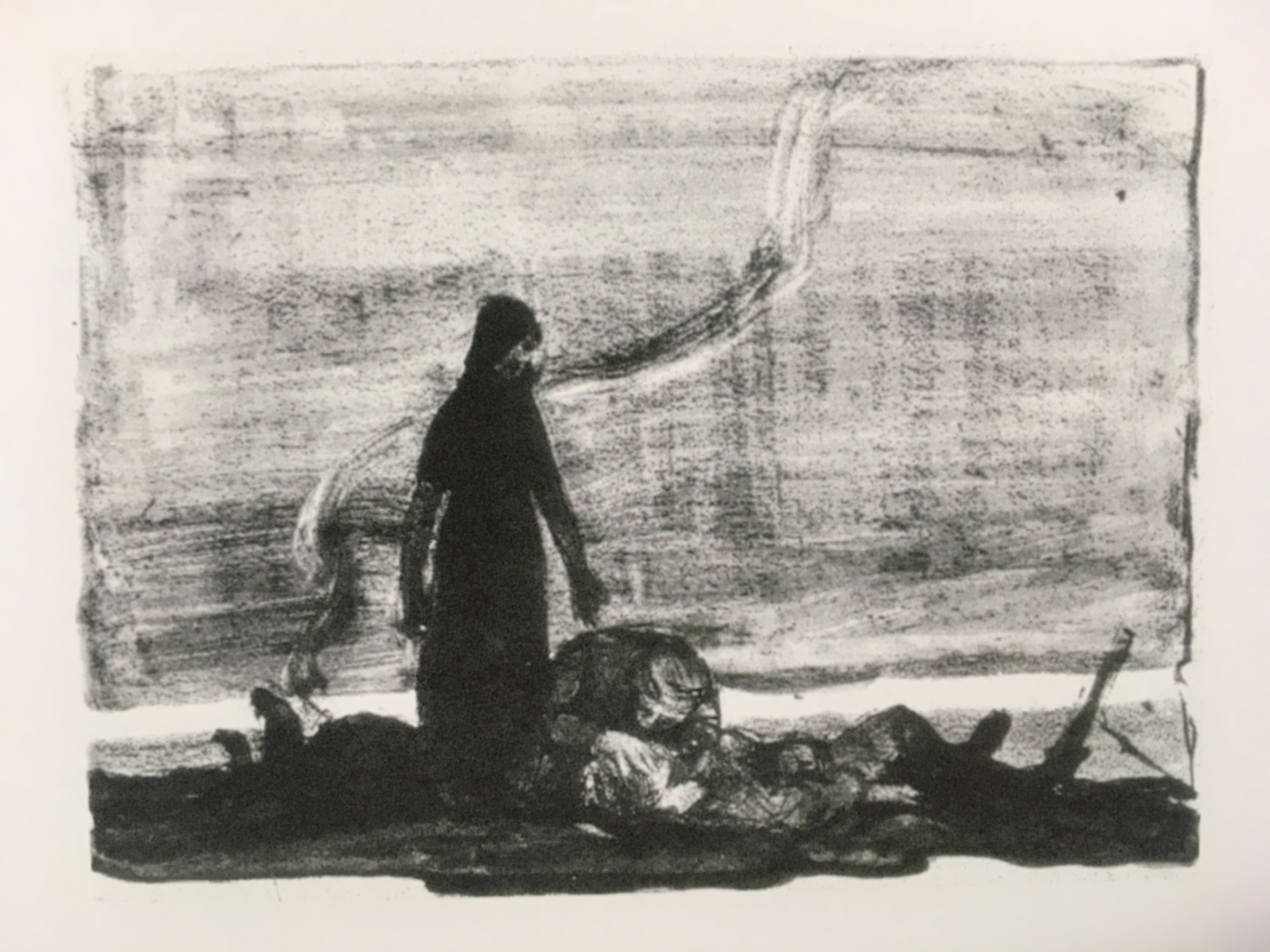Exhibition
The Halifax Explosion

Walking the Debris Field: A Natural History, December 6, 2015. Architectural Model of the Richmond School on Roome Street destroyed in the Halifax Explosion. Photograph by Robert Bean.

Claire Hodge, 5544-5550 Stanley Place, from the series Negotiations, 2015-17.

Arthur Lismer, Sorrow, 1917. Collection of the University of Lethbridge Art Gallery.
The Halifax Explosion occurred on the morning of 6 December 1917 as the result of a collision between the SS Mont-Blanc, a French cargo ship laden with high explosives, and the SS Imo, a Norwegian relief vessel. The two ships collided in the Narrows, a strait connecting upper Halifax Harbour to the Bedford Basin, and the resulting fire on board the Mont-Blanc ignited her cargo. The ensuing explosion devastated the Richmond district of Halifax as well as the opposite shore of Dartmouth. Approximately 2,000 people were killed by the immediate blast, its concussion, and its debris, or by the resultant fires that engulfed collapsed buildings. An estimated 9,000 others were injured.
On both the Halifax and Dartmouth shores, nearly all structures within an 800-metre radius of the blast were obliterated. A pressure wave snapped trees, bent iron rails, demolished buildings, grounded vessels, and scattered fragments of the Mont-Blanc for kilometres. Hardly a window in Halifax and Dartmouth survived the explosion. A generations-old Mi’kmaq community at Turtle Grove, in the area on the Dartmouth shore now known as Tuft’s Cove, was also completely destroyed by a tsunami created by the explosion.
The historical narrative of the Explosion is often considered from a military point of view. As an alternative approach to this well examined event, the Dalhousie Art Gallery is working with several artists, urban planners, social historians, cartographers, and architects to explore its various social and cultural impacts, and will present five exhibitions:
Walking the Debris Field: Public Geographies of the Halifax Explosion
Narratives in Space + Time Society
The Halifax Explosion reverberates as a definitive historic moment around which themes of destruction, reconstruction, urbanism, and community continue to circulate. From 2014 through 2017, as the centenary of the Explosion approaches, Narratives in Space + Time Society (NiS+TS) has presented a number of public walking events designed to explore the ways in which the disaster, the ensuing relief efforts, and the reconstruction continue to shape the diverse experiences and understandings of this city.
Founded in 2012 and based in Halifax and Dartmouth, NiS+TS is an interdisciplinary creative research group that promotes walking and the use of mobile media by artists and members of the public. The group’s projects are situated in spaces that are often overlooked, disused, or vacant. Participants use walking, talking, and making objects in combination with technologies such as GPS, smartphones, and mobility tracking devices to conduct interactive explorations of locations and subjects.
Utilizing research methods such as psychogeography, an experiential approach to drifting through urban space devised by the French theorist Guy Debord, and creation models that emphasize interdisciplinary collaborations, the exhibition features new projects created by NiS+TS to mark the Halifax Explosion’s 100th commemoration.
Claire Hodge: Negotiations
Curated by Peter Dykhuis
The Hydrostone neighbourhood, now nearly one hundred years old, is one of the most striking legacies of the Halifax Explosion. It stands as a powerful testament to the reconstruction efforts required to house the working-class families who were left homeless by the events of the Explosion. For many, however, the Hydrostone’s appeal lies in its unique ability to express the passage of time: in this neighbourhood, layers of the present co-exist with traces of the past. The original grey granite ‘hydrostone’ blocks live anachronistically side-by-side with a dizzying array of wood, composite, and vinyl siding materials. Extensions have been added, shutters have been removed, exterior walls have been painted, porches have been closed in, and bushes and plants have been planted or unearthed.
Halifax artist Claire Hodge has systematically photographed all of the existing homes to create a portrait of the changing face of a landmark neighbourhood. Hodge notes, “The Hydrostone townhomes reveal a complex set of negotiations realized tacitly or explicitly by the people who have lived there. Some blocks of houses are united in their aesthetic vision. Others seem to attest to greater individualist streaks and look strangely disjointed. Most often, the blocks of houses suggest a series of compromises between harmony and difference, between the ‘greater good’ and tenacious individualism.”
Arthur Lismer and the Halifax Explosion
Curated by Paige Connell and Peter Dykhuis
This exhibition highlights the work that Arthur Lismer, influential principal of the Victoria School of Art and Design (now NSCAD University), produced during his time in Halifax from 1916 to 1919. With the exception of the large oil painting Halifax Harbour—Time of War, from Dalhousie Art Gallery's own permanent collection, the works presented are a selection of preparatory drawings and oil sketches that were made in situ as the artist explored the city and shorelines on foot. These were not made with the intention of public display—they are observational and documentary, and served an instrumental purpose in Lismer's overall development of large studio paintings.
The legacy of this ambulatory field work is its contribution to our understanding of Halifax’s history, both civic and military, during World War One. Among the most significant of these works are his chronicles of the Halifax Explosion, few of which are known to still exist. Today, their significance lies not only as a record of a formative time in Nova Scotian history, but also in the insight they offer into the working mind and hand of one of Canada’s most renowned painters during the years that preceded the founding of the Group of Seven in 1920.
Arthur Lismer and The Drama of a City
Selection of printed matter curated by Alan Ruffman
In addition to being an art educator and founding member of the Group of Seven, Arthur Lismer had also worked as a commercial illustrator and, while he lived in Halifax, produced illustrations for a number of publications, including The Drama of a City: The Story of Stricken Halifax by Stanley K. Smith. Published in early 1918, the book documents the aftermath of the Explosion and includes eleven original illustrations.
Courtesy of historian Alan Ruffman, one of the few extant copies of this book will be on display, together with copies of the magazine Canadian Courier which, in the first four months of 1918, printed Lismer's 'on-the-spot' drawings related to the Explosion as Halifax began to rebuild. Because the original drawings for the book are not known to exist, this exhibition will include photographic reproductions of the illustrations to provide a closer look at what are some of the only artistic interpretations of this historic disaster.
From 2D to 3D: Mapping Halifax Over Time
Organised by James Boxall, GIS Specialist and Map Curator, Dalhousie University
The Dalhousie Libraries' GIS Centre has undertaken a project to create a website that explores the geographic history of Halifax by recreating historic images in 2D and 3D. The images allow people to view streets, buildings, and other topographic features and the changes that have occurred in Halifax over time. While future additions of data and imagery will extend back to pre-settlement in 1749, this exhibition presents depictions of Halifax from just before the Explosion to the present day.




